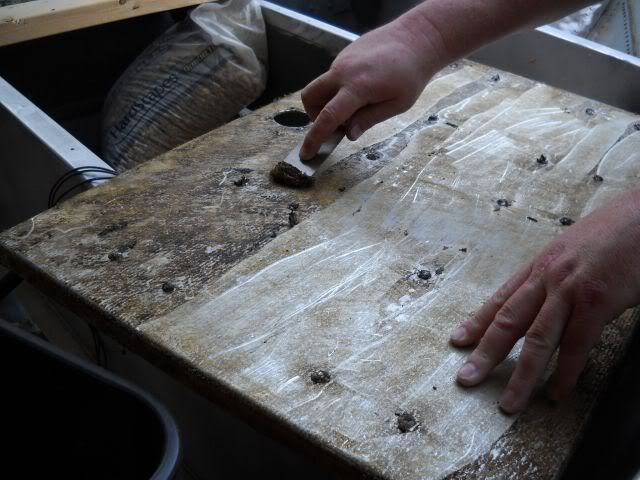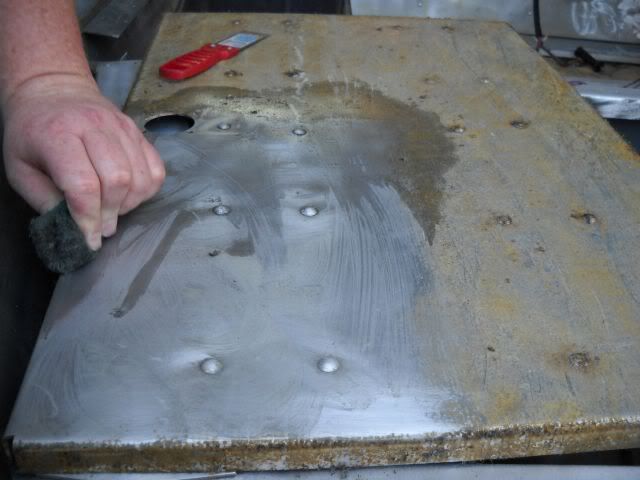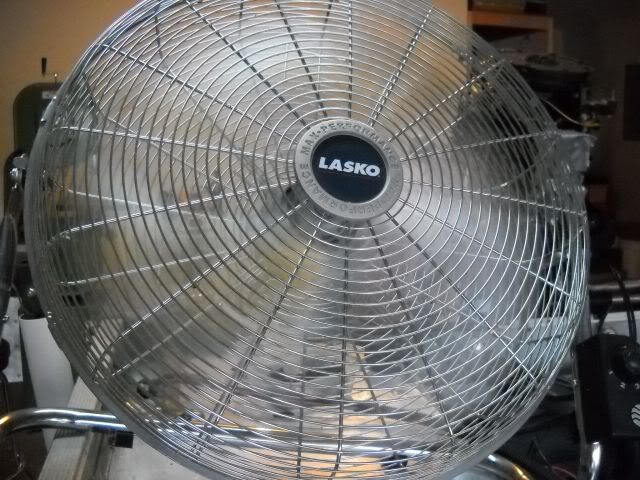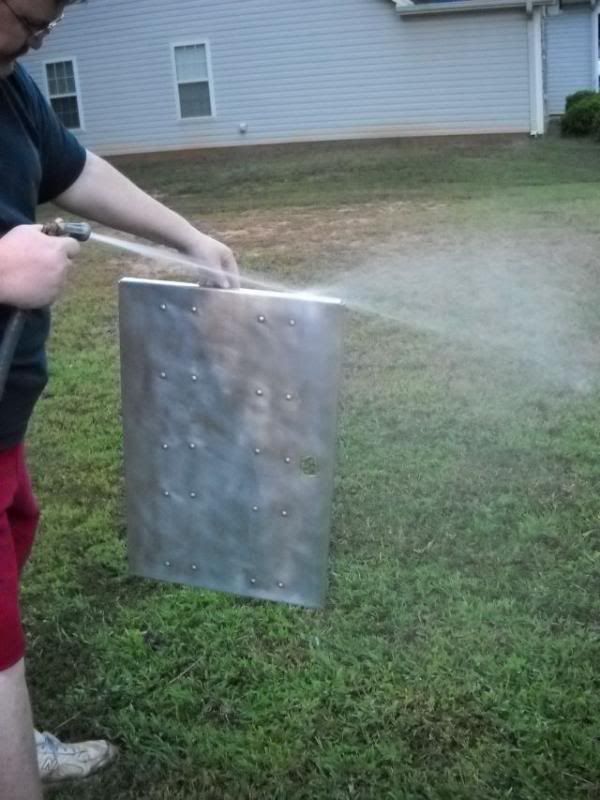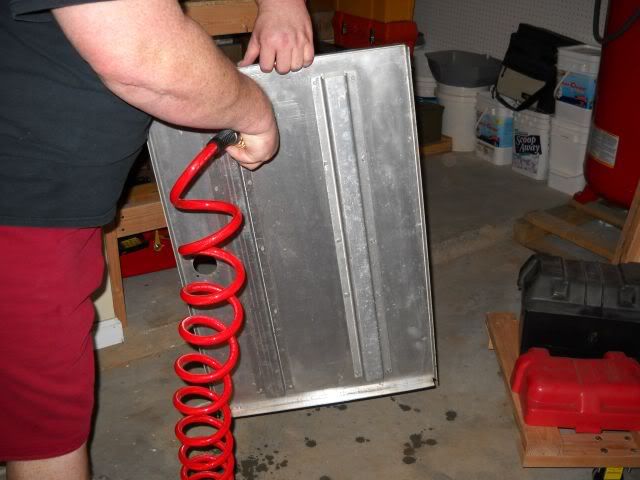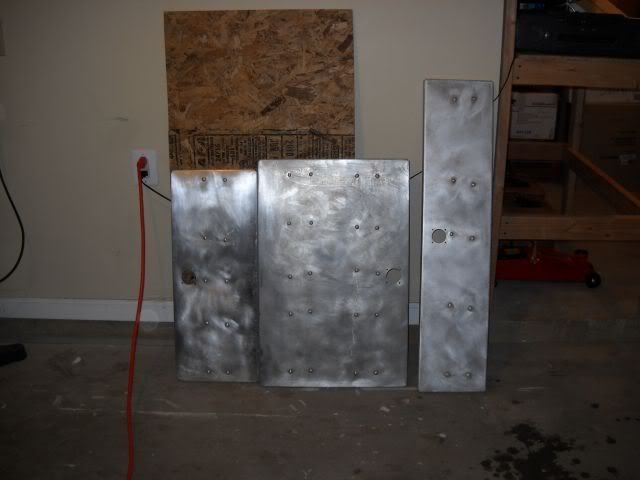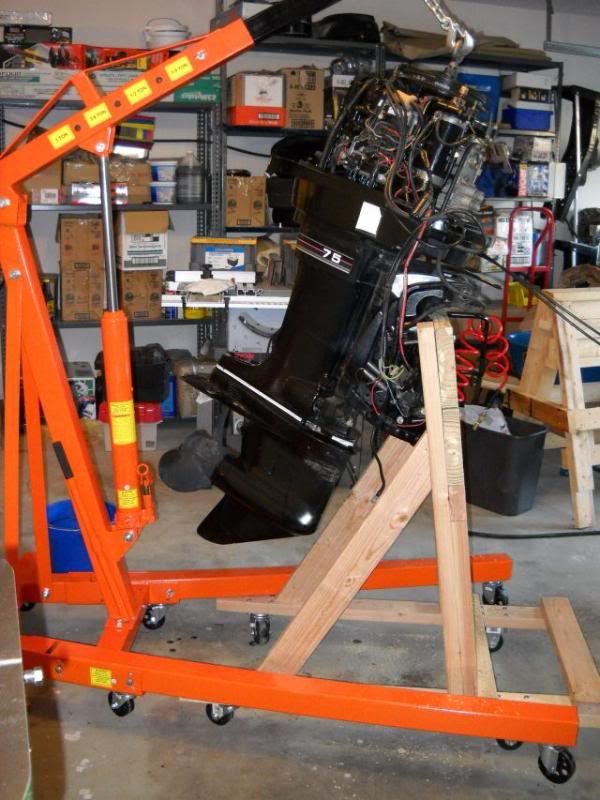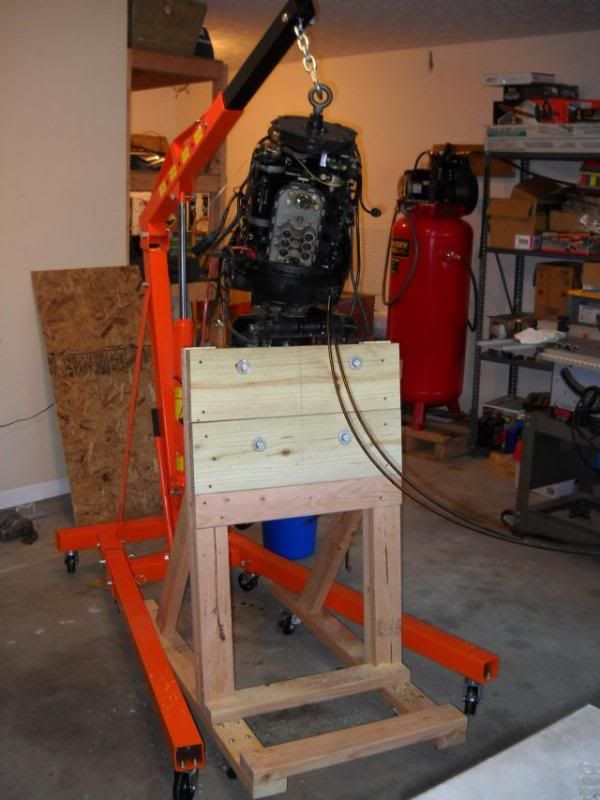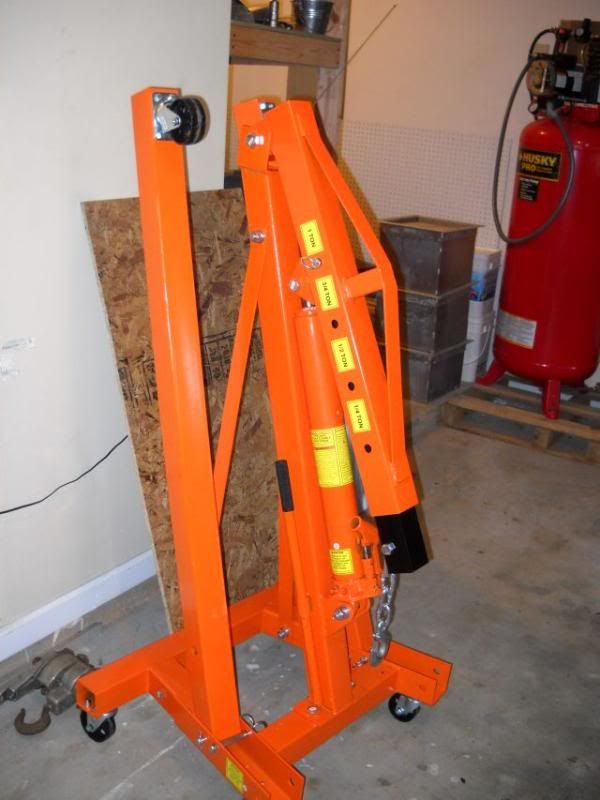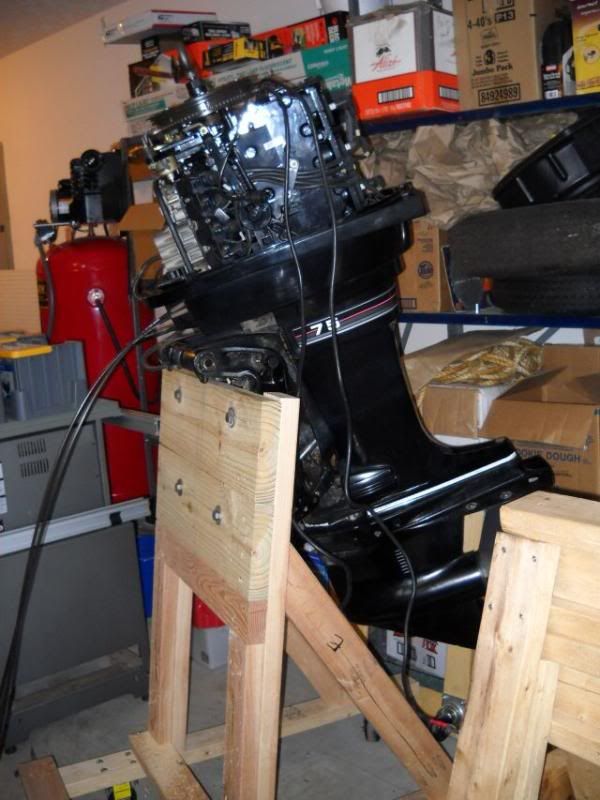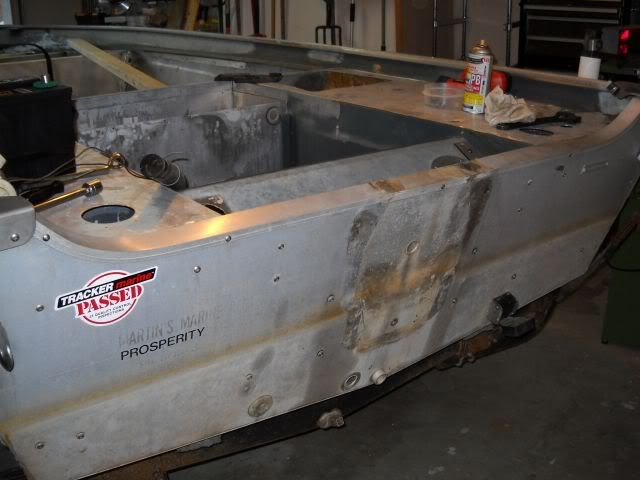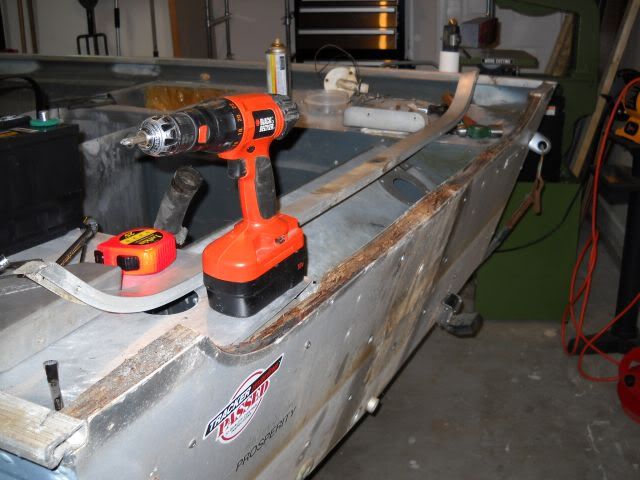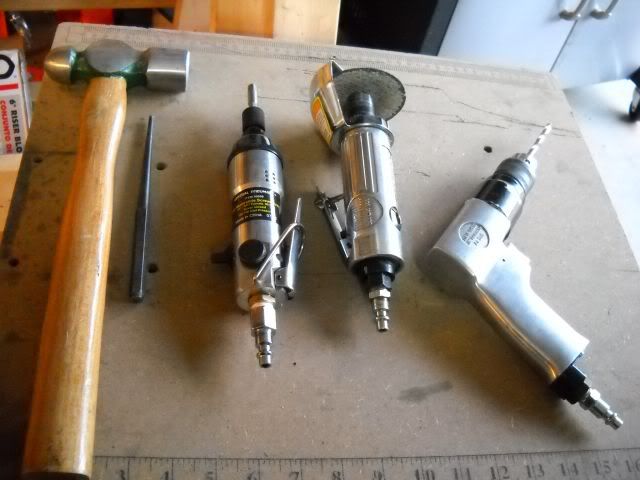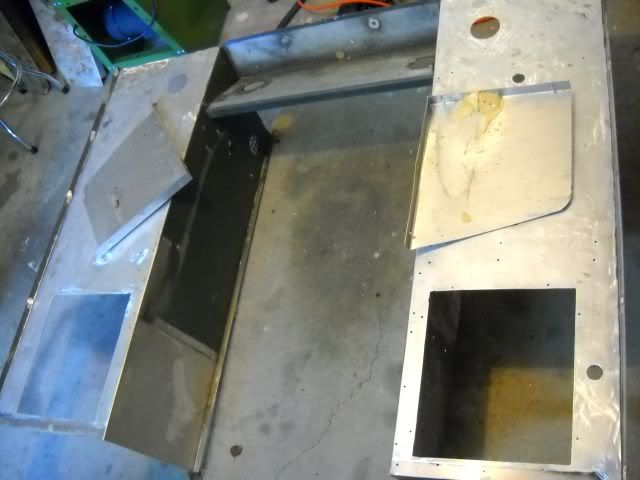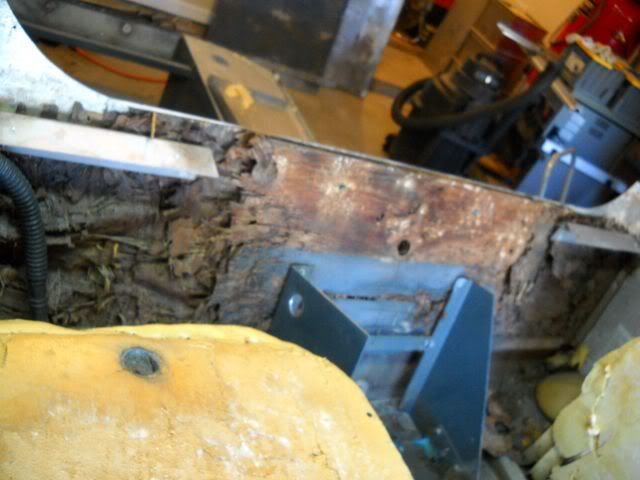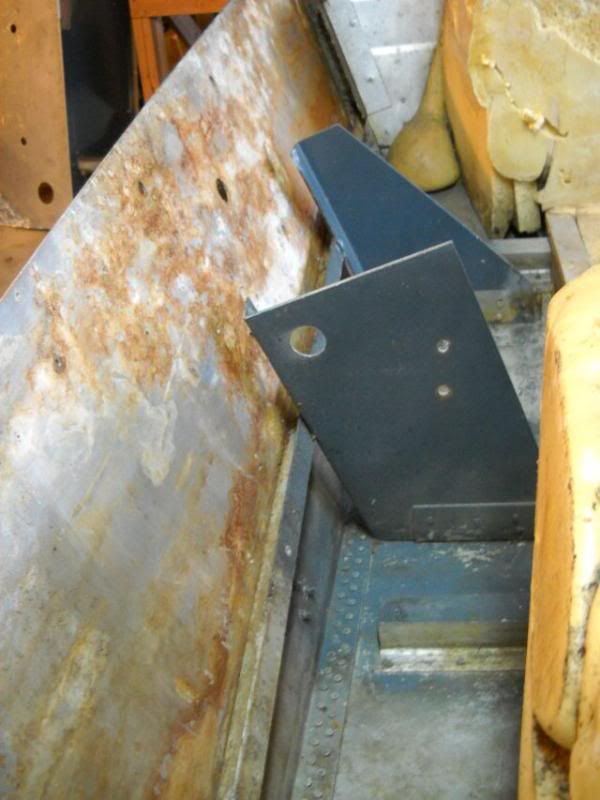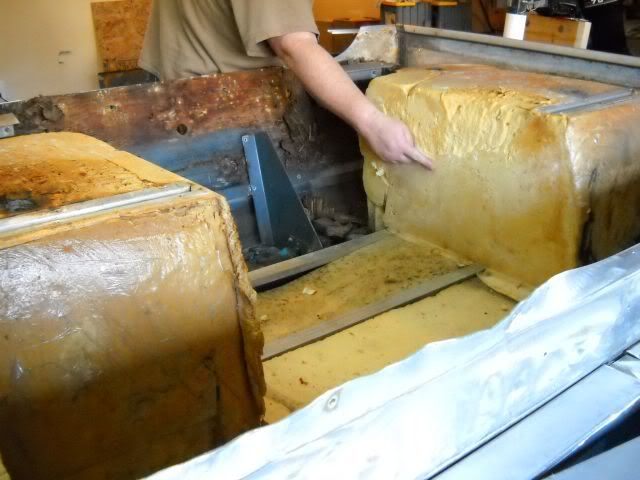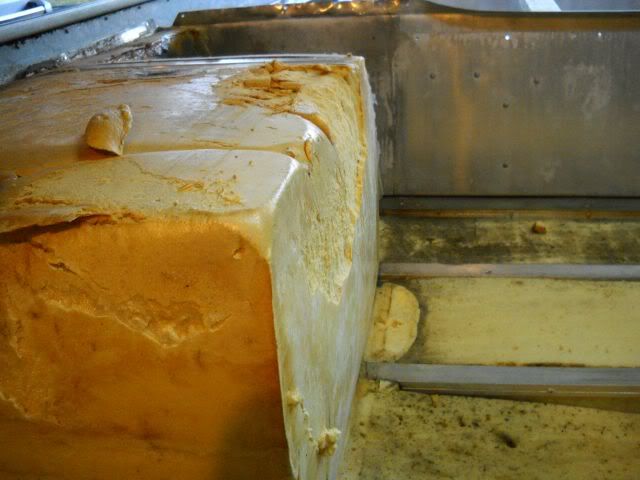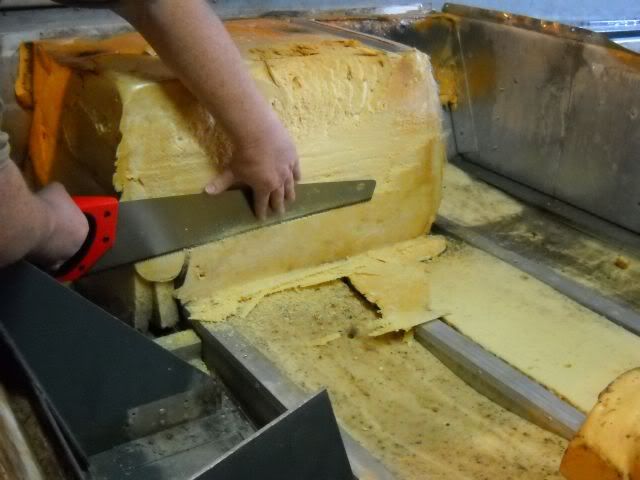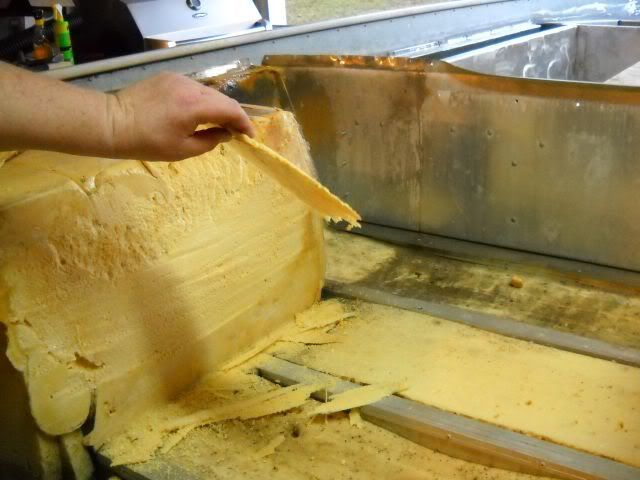I made a bit of progress today in spite of making a trip over to the nearby town of Gainesville to pick up some additional link belt and a couple new bearings for my bandsaw to set it up for aluminum cutting. The new blades are coming in Friday, so I should have the bandsaw ready to cut aluminum soon.
Some more pics, this time of cleaning carpet glue and carpet residue off of hatches with both Goof OFF and a home brew I came up with. I tried out a small bottle of Goof Off and while it worked okay, it was expensive. I noticed the can said it contained acetone and xylene, two items I just happen to have about a half gallon of each on the shelf in my garage. I mixed a 50/50 mixture of acetone and xylene up in a spray bottle and tried it out. Same results as the higher priced Goof Off, but a good bit cheaper. Here's some pics of the process:
With both the Goof Off and the home brew mix, I soaked the area I wanted to work with and let it work for a few seconds. Unlike the guy in the video, this stuff dried pretty quickly and things returned to "hard to remove" if I waited too long. Might be better with carpet or newer glue, but the 24 year old stuff I had was long since dried hard.
So once soaked in, I scraped the big portion of the stuff off.
Next, I used a green scrubbie pad to finish cleaning the carpet glue off the hatches. Each small area had to be soaked and then scrubbed off. I think steel wool would have been a better choice, because the scrubbie pads very quickly lost their cutting ability with the action of the home brew on them, but I had these as leftovers from bedlining my truck and wanted to get all the use out of them. I just kept turning them over until there was no useable edge. Worked pretty well and left a blackish residue that I would have to rinse off.
The fumes from this kinda stuff are NOT good for you. I was working outside my garage and used a fan to blow the fumes away. A good mask is also adviseable, but I couldn't find mine.
After everything was scrubbed off, I rinsed off the residue with the water hose. I think it might be better to use soap and water, but I wasn't feeling that energetic for something I'm likely going to goop back up with carpet glue.
Blowing the water off with an air compressor. I coulda used a towel, but again, I'm lazy.
End results. The one on the left is the panel cleaned using Goof Off and the above pictured methods. The one in the middle was cleaned using Acetone/Xylene 50/50 home brew and the above pictured methods. The one on the right was cleaned using a 60 grit Norton 3X hook and loop on my palm sander. Notice the area close to the rivets that still have glue. Any area where the sander pad didn't reach well had the same problem.
Notes:
1. The Acetone/Xylene 50/50 home brew in a spray bottle was just as effective as Goof Off and cheaper.
2. The amount of effort using the scraper and scrubbie pad method was about the same amount of effort as the palm sander, was a bit more controllable and a bit slower.
3. The nod goes to the chemical method as being the most effective at removing most of the glue.
























































